The Rise & Fall of Glamorous Airline Interiors
The interior design of airplanes in the 1960s and 1970s reflected the cultural trends and technological advancements of the time, often emphasizing luxury, style, and innovation. These decades were considered the "Golden Age of Air Travel," with airlines competing to provide passengers with a premium experience. 1960s Airplane Interiors
1960s Airplane Interiors
The swinging sixties had a large emphasis on elegance and comfort. Cabins were designed to be extra wide and seating areas featuring generous legroom. Flying was a big deal, possibly even a once in a lifetime experience for some. Airlines often included lounge areas and bars in the cabin to encourage socialization. The visual aesthetic was certainly something to write home about. Vibrant colors like orange, pink, teal and gold dominated the interiors. Geometric and floral patterns covered the seat upholstery and curtains.
When it comes to luxury, Airlines like Pan Am and TWA emphasized the feeling, their first-class dining services, which included multi-course meals we’re even served on fine china. The lavish amenities didn’t stop there, with complimentary cocktails and personalized service, being the norm.
Technical innovations during this decade included the Boeing 707 and the Douglas DC-8 introduced modern pressurized cabins, enabling higher altitudes and more comfortable flying experiences. Some aircraft offered private sleeping berths or partitioned spaces for privacy.
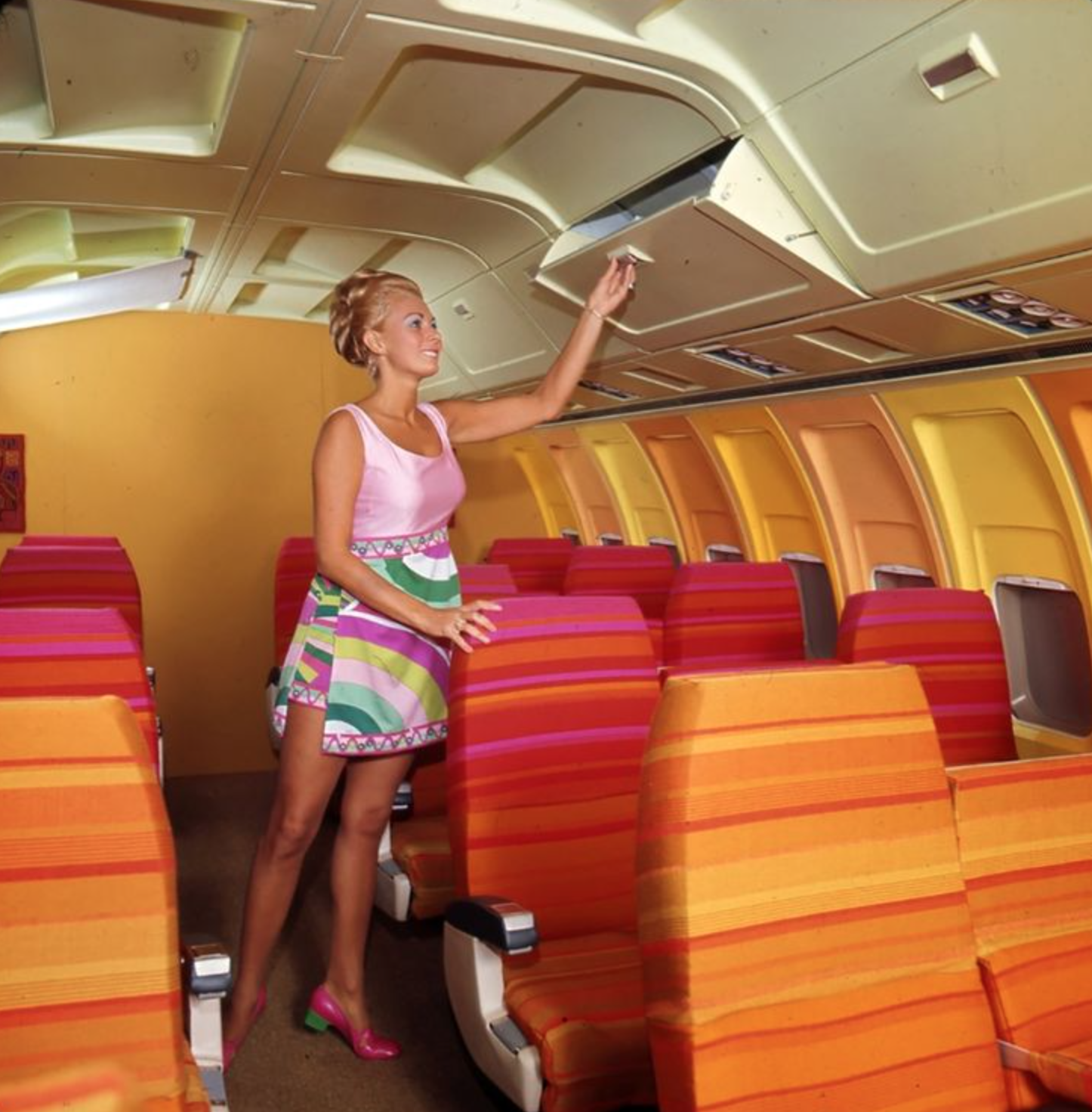

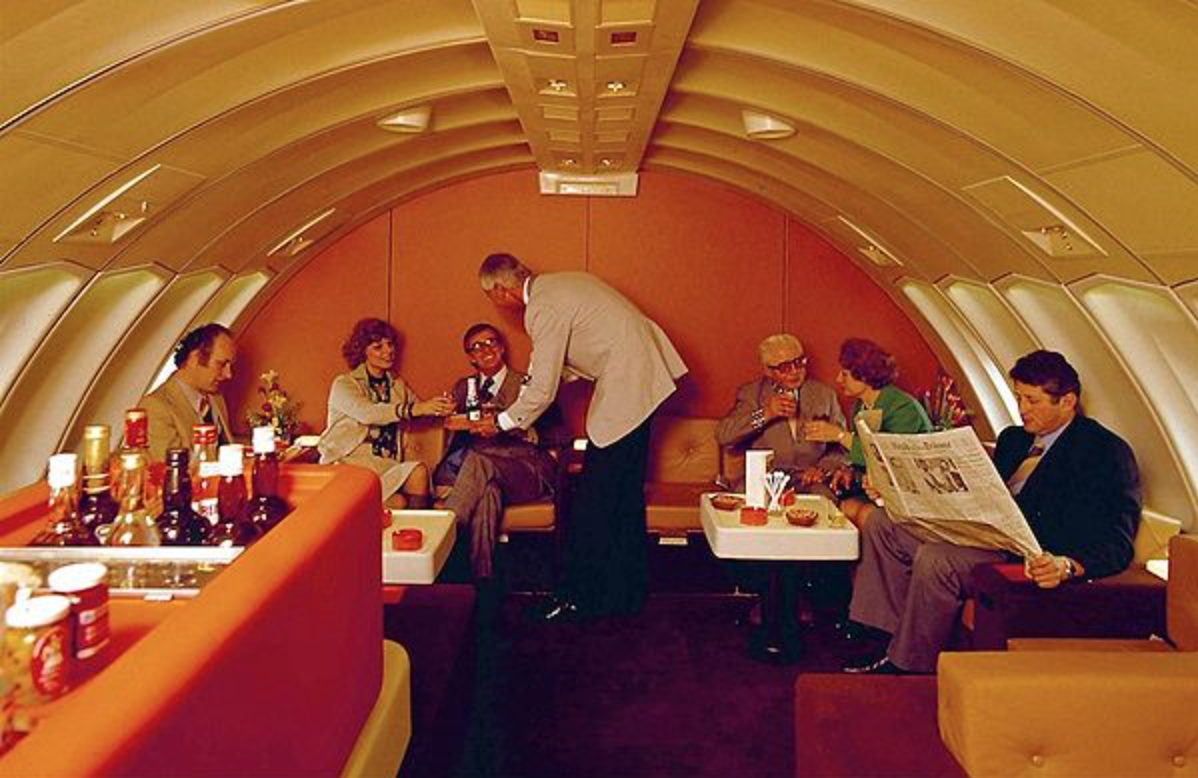
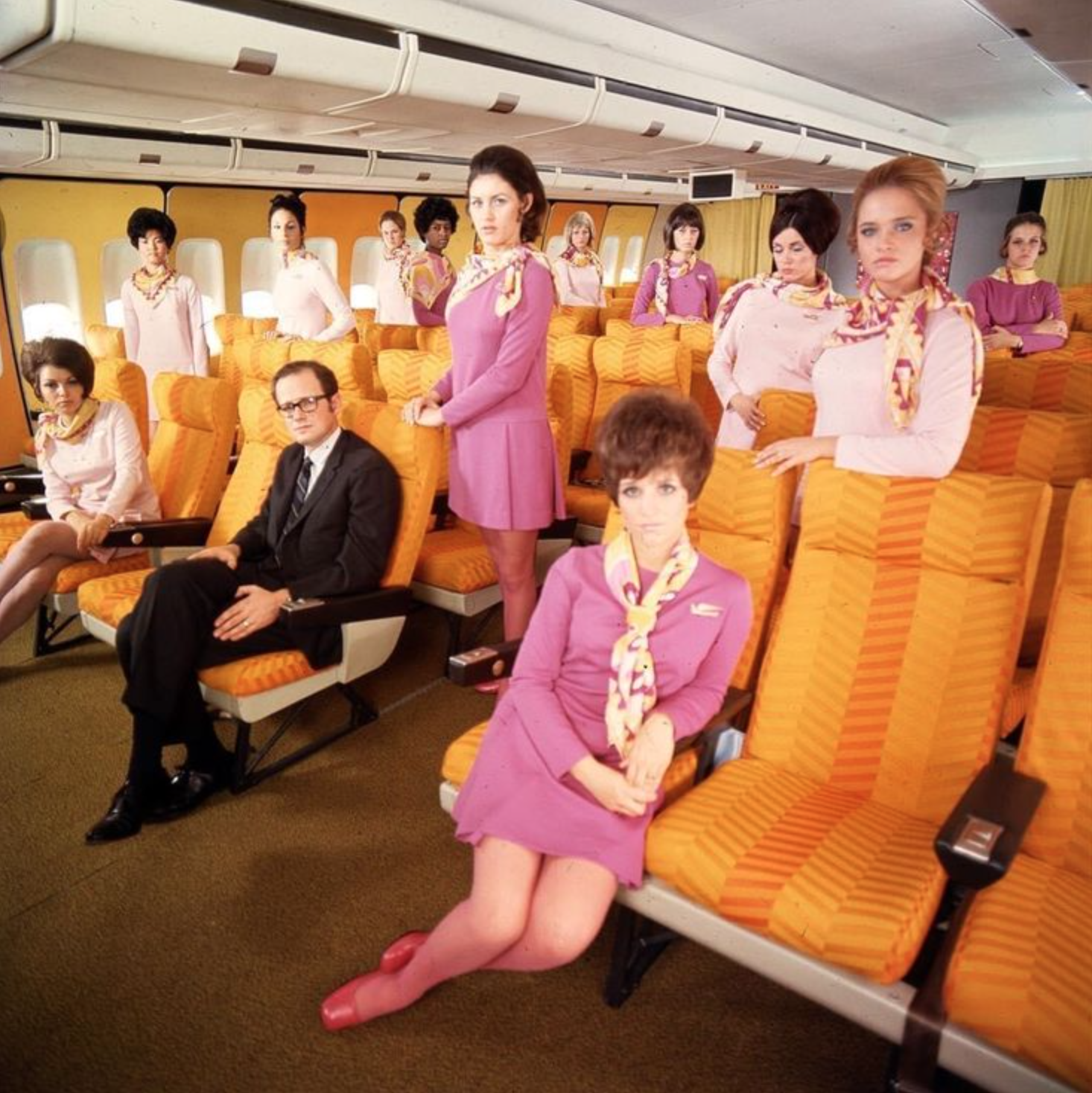
1970s Airplane Interiors
During the seventies came the rise of the Jumbo Jets. The introduction of the Boeing 747 in 1970 revolutionized airplane interiors with double-decker designs, larger cabins, and dedicated first-class lounges on the upper deck. This is also the beginning of Airlines separating cabins more distinctly into first, business, and economy classes.
The seventies embraced a more eclectic aesthetic, with earthy tones like browns, beiges, and mustard yellows, often paired with funky patterns. Some airlines used psychedelic designs to evoke the era's countercultural spirit.
To further enhance the experience, airlines began offering personal in-flight entertainment where passengers could shared projection screens for movies in larger aircrafts. Airlines even experimented with onboard pianos and other unique features for passenger enjoyment.
Due to the 1973 oil crisis influenced changes in airline operations, including a shift toward efficiency in interior layouts, which started reducing the spaciousness of economy class.
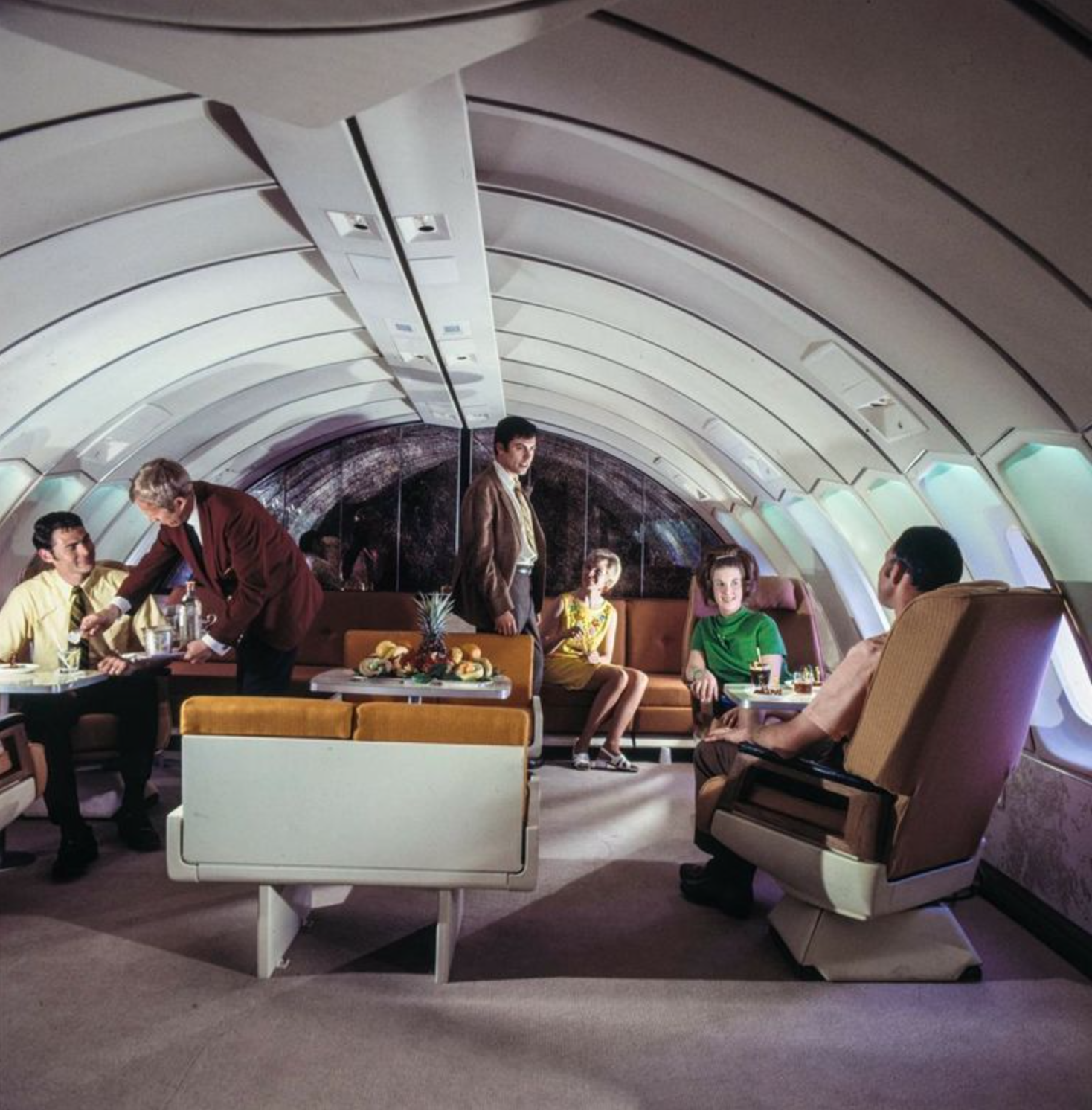
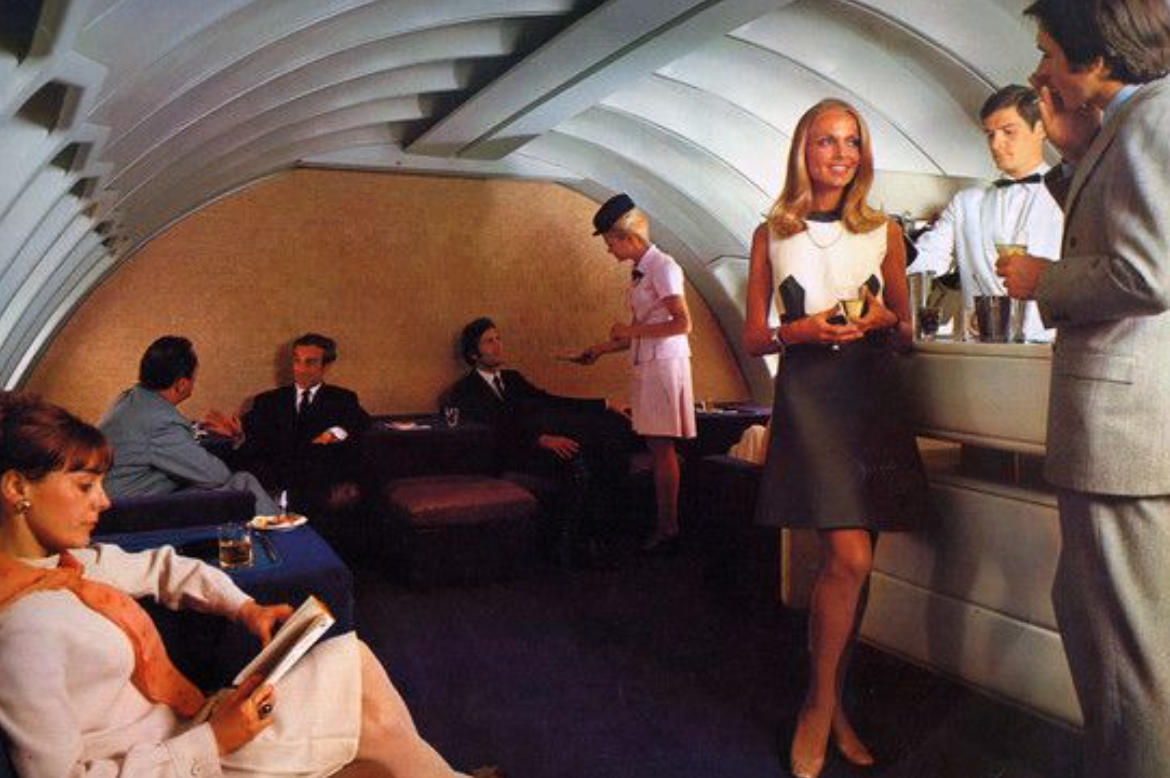
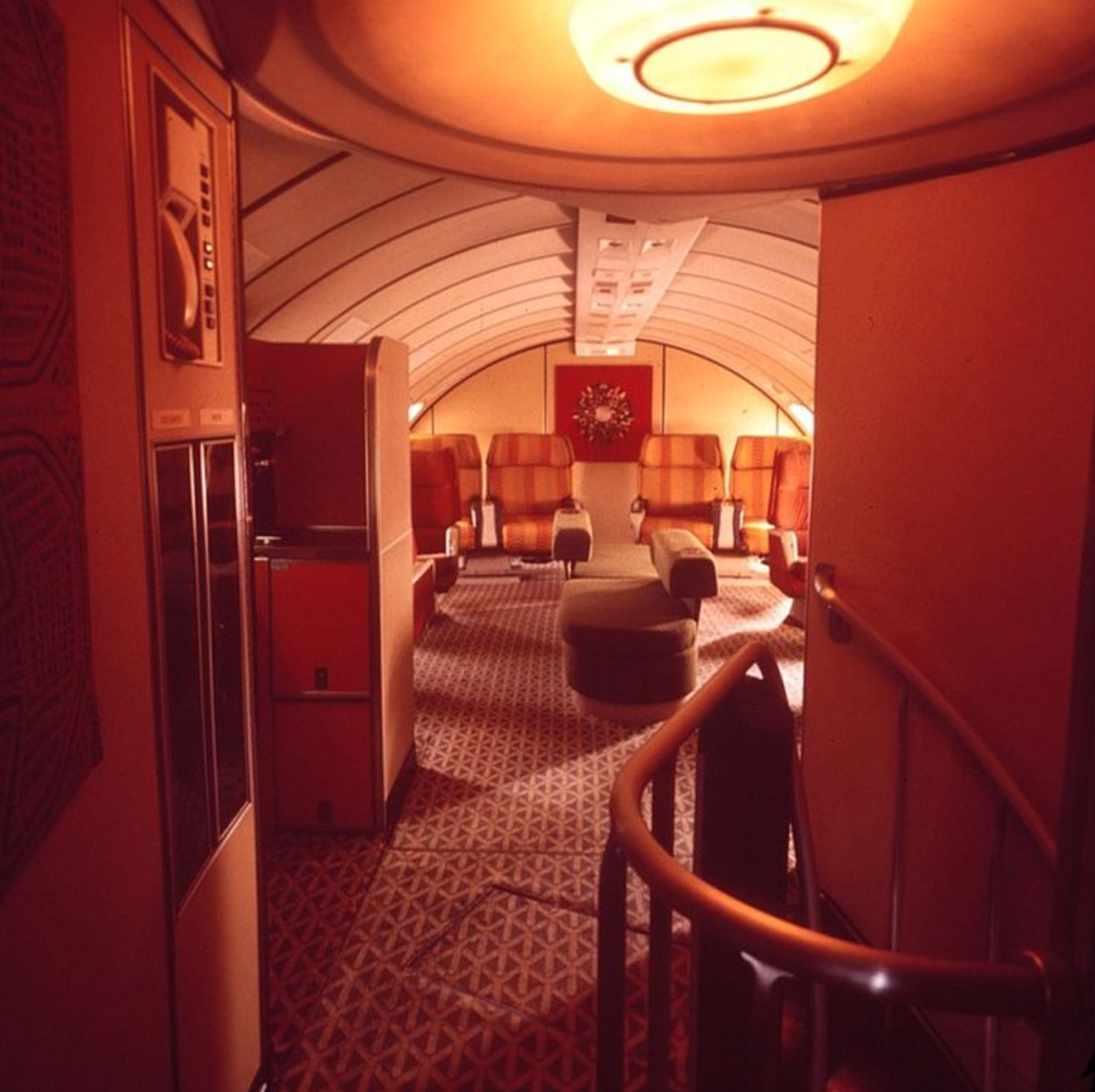
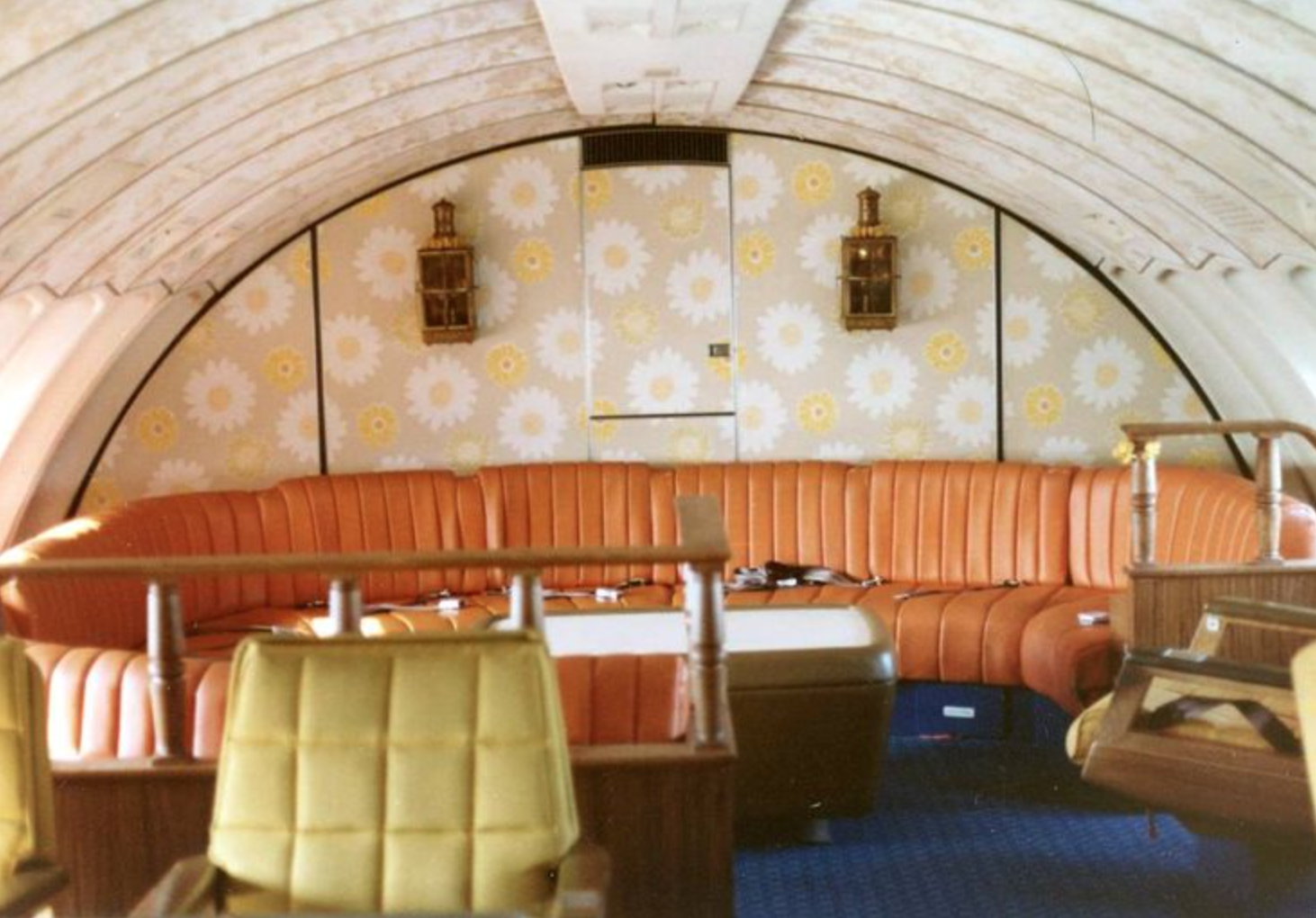
Notable Features and Trends
Advertising Glamour: Airlines marketed their interiors as luxurious and cutting-edge, using aspirational imagery that mirrored the high-fashion aesthetic of the time.
Focus on Hospitality: Flight attendants played a central role in creating an ambiance of hospitality and were often seen as icons of glamour in their stylish uniforms.
Iconic Airlines: Carriers such as Pan Am, TWA, and Braniff International Airways set benchmarks with their innovative and artistic interiors. Braniff, for instance, collaborated with Alexander Girard and Emilio Pucci for avant-garde interior and uniform designs.
Airplane interiors from the 1960s and 1970s are often remembered as symbols of sophistication and opulence, representing a bygone era of air travel before the industry became more focused on efficiency and cost-effectiveness.
The Decline of Glamorous Airlines
Airlines gradually moved away from unique, vibrant, and luxurious interiors due to a combination of economic, regulatory, and operational factors. The shift reflects broader changes in the aviation industry, driven by increasing demand for air travel, competition, and a focus on efficiency. Here are the key reasons for this change:
1. Deregulation of the Airline Industry (1978 in the U.S.)
Before deregulation, airlines operated under government-imposed pricing and route controls, enabling them to compete on service quality, including lavish interiors.
Deregulation introduced price competition, making low fares a priority for attracting passengers. Airlines began to focus more on efficiency and cost-cutting rather than luxury to remain competitive.
2. Increased Passenger Volume
The post-deregulation era saw a significant rise in air travel as ticket prices dropped.
Airlines prioritized maximizing seating capacity over offering spacious and luxurious interiors to accommodate more passengers per flight, especially in economy class.
3. Fuel Costs and Economic Pressures
The 1973 and 1979 oil crises drastically increased fuel prices, forcing airlines to rethink operational costs.
Lightweight materials and more standardized cabin designs helped reduce aircraft weight and fuel consumption, making luxurious, heavy interiors less practical.
4. Globalization and Standardization
As air travel became more global, airlines moved toward standardized designs that could appeal to a broader range of passengers.
Neutral colors, simple designs, and modular seating became the norm to streamline manufacturing, maintenance, and replacement processes.
5. Emergence of Low-Cost Carriers (LCCs)
The rise of airlines like Southwest, Ryanair, and EasyJet shifted the industry's focus to no-frills, affordable travel.
To compete with LCCs, even full-service airlines began prioritizing efficiency over luxury, particularly in economy class.
6. Technological Advancements in Aircraft Design
Newer aircraft like the Airbus A320 and Boeing 737 prioritized modular interiors that could be customized but remained cost-effective.
Airlines invested in functional features like modern in-flight entertainment and Wi-Fi instead of extravagant designs.
7. Changing Consumer Expectations
The democratization of air travel meant a shift in customer priorities, with many passengers valuing affordability and convenience over luxury.
Frequent flyers in premium classes still expect comfort, but even these offerings are more standardized and streamlined than in the past.
8. Safety and Regulatory Standards
Safety regulations became more stringent, limiting the types of materials and designs that could be used in aircraft interiors.
Fire-resistant and lightweight materials replaced decorative elements that might not meet modern safety requirements.
9. Focus on Branding Consistency
Airlines shifted toward cohesive, globally recognizable branding. Simple and neutral interior designs align with corporate identities and are easier to replicate across fleets.
Conclusion
Airlines stopped designing interiors to be unique, vibrant, and luxurious primarily because of the need to reduce costs, increase efficiency, and accommodate more passengers. While luxury is still available in first and business classes, the overall industry focus has shifted to affordability and practicality for the mass market.
DISCLAIMER: THE MILLIE VINTAGE DOES NOT OWN ANY RIGHTS TO THESE PHOTOS. PLEASE NOTE THAT ALL IMAGES AND COPYRIGHT BELONGS TO THE ORIGINAL OWNERS. NO COPYRIGHT INFRINGEMENT INTENDED.






